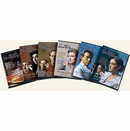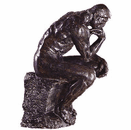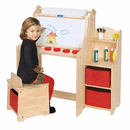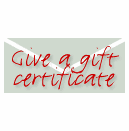Beginning Necessities for Watercolor Painting
Whether you are new or old into the world of art, when you are trying out something you have never experienced before, it can be quite intimidating. It can be even more daunting if the concept of the technique is completely foreign to you. Watercolor painting has that effect on many people. They are not sure where to start, or even what brands to purchase while they are preparing for their journey into this new world. The techniques alone are of a more thoughtful process that takes consideration and planning, as well as a basic understanding of color usage. That being said, you need to start with gathering the essential tools for learning the ins and outs of watercolor.
While you are busy learning the techniques and simply familiarizing yourself with the paint, it is not crucial that you spend a fortune on your beginner’s set of supplies. You will make your mistakes and more than likely, you will not be successful if you dive head first without learning how to swim. Do not feel as though you should spend a lot of money to simply familiarize yourself with the painting processes. However, if you are financially able to buy the top brands and most expensive brushes, then by all means feel free.
With a little research, we conclude that the more popular, and more efficient, brand of watercolor paint for beginners to start with would be Winsor & Newton tubes of paint. The Holbein Artist Watercolor Set of 12 is also a great package that includes the necessary colors to start with and is highly recommended as well. If you plan to simply work freely at your newfound interest in watercolor, then we suggest that you invest in a pan of watercolors. This is only to insure that your colors will not dry out as quick and you are able to frequent them as you please while maintaining your money’s worth of them.
The brushes you should have to start your collection of watercolor supplies would be a round brush, a flat wash brush, and an oval wash or “mop” brush. If you wish, it would be a good idea to include a rigger or liner brush and a brush that is approximately 3” wide. The brushes should be a blend of sable-hair or squirrel and synthetic hair. If it is possible, 100% sable hair works the best as it has the ability to spring back into shape, hold a point, and hold a quantity of pigment and water before running dry. Unfortunately, they wear out a little quicker than the synthetic brushes.
Finally, the paper! There is a vast assortment of paper that will certainly send your head a-spinning. You have a variety of surface textures as well as an abundance of paperweights. The solution for you beginners is simply this: you will want to start with 140lb paper (meaning, the thickness of the paper is measured by weight). The texture of the paper should be cold press. This means that the paper is slightly textured.
Remember that art is a form of self-expression. It is a means to show the world how you interpret it. So while you are learning the techniques of various mediums, keep in mind that there are no limitations when you are creating art. However, the aforementioned tools will help guide you to put your visions to paper.
While you are busy learning the techniques and simply familiarizing yourself with the paint, it is not crucial that you spend a fortune on your beginner’s set of supplies. You will make your mistakes and more than likely, you will not be successful if you dive head first without learning how to swim. Do not feel as though you should spend a lot of money to simply familiarize yourself with the painting processes. However, if you are financially able to buy the top brands and most expensive brushes, then by all means feel free.
With a little research, we conclude that the more popular, and more efficient, brand of watercolor paint for beginners to start with would be Winsor & Newton tubes of paint. The Holbein Artist Watercolor Set of 12 is also a great package that includes the necessary colors to start with and is highly recommended as well. If you plan to simply work freely at your newfound interest in watercolor, then we suggest that you invest in a pan of watercolors. This is only to insure that your colors will not dry out as quick and you are able to frequent them as you please while maintaining your money’s worth of them.
The brushes you should have to start your collection of watercolor supplies would be a round brush, a flat wash brush, and an oval wash or “mop” brush. If you wish, it would be a good idea to include a rigger or liner brush and a brush that is approximately 3” wide. The brushes should be a blend of sable-hair or squirrel and synthetic hair. If it is possible, 100% sable hair works the best as it has the ability to spring back into shape, hold a point, and hold a quantity of pigment and water before running dry. Unfortunately, they wear out a little quicker than the synthetic brushes.
Finally, the paper! There is a vast assortment of paper that will certainly send your head a-spinning. You have a variety of surface textures as well as an abundance of paperweights. The solution for you beginners is simply this: you will want to start with 140lb paper (meaning, the thickness of the paper is measured by weight). The texture of the paper should be cold press. This means that the paper is slightly textured.
Remember that art is a form of self-expression. It is a means to show the world how you interpret it. So while you are learning the techniques of various mediums, keep in mind that there are no limitations when you are creating art. However, the aforementioned tools will help guide you to put your visions to paper.
Copyright © 2002-2025 Madison Art Shop™ LLC. All Rights Reserved.


















